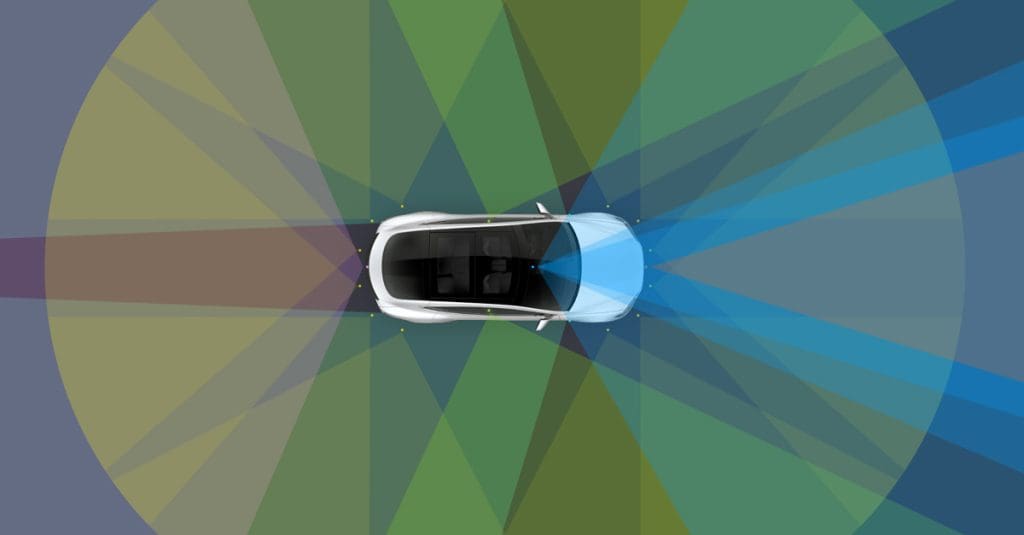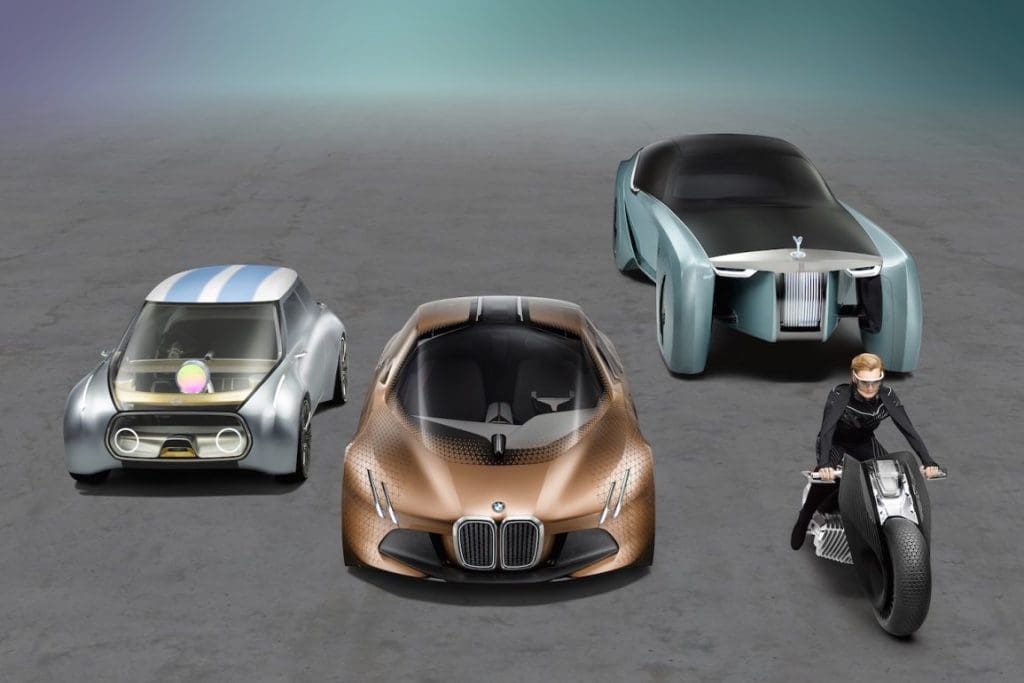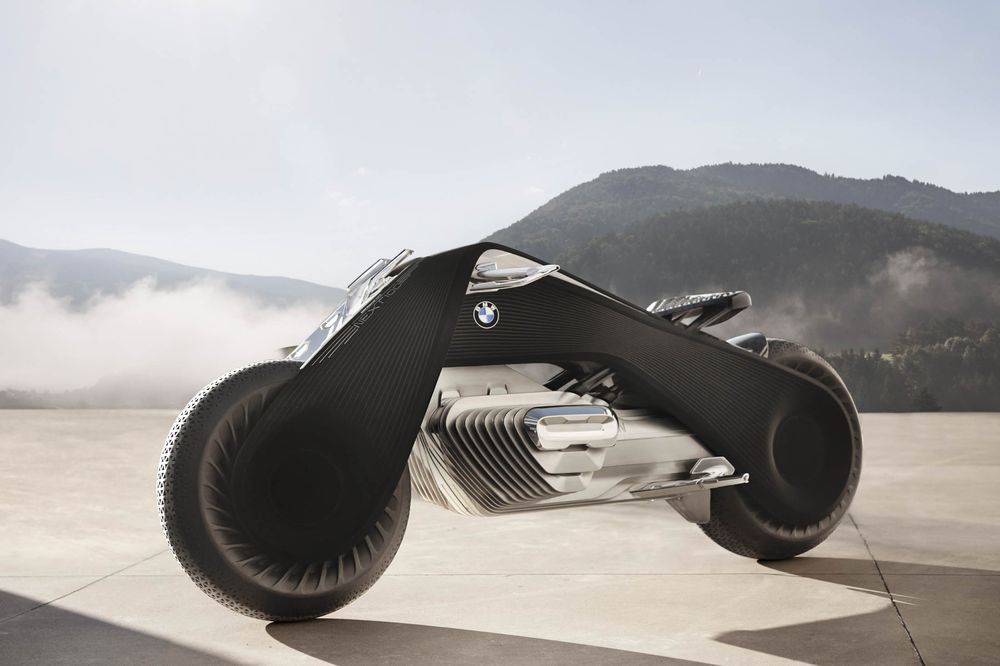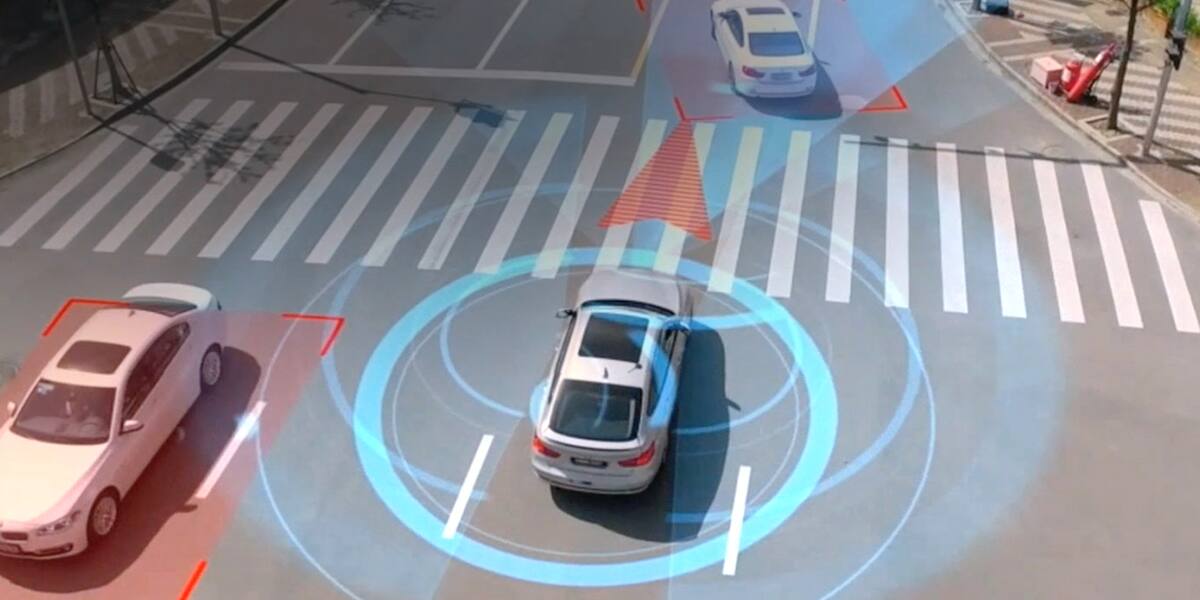The advent of autonomous vehicles has led to a big question mark hanging over the future of motorcycling. AI-driven cars are smart, logic-driven machines, equipped with modern technology and innovative safety features. Motorcycles are quite the opposite. They can be dangerous, they can be irrational, and it’s their thrilling nature that makes them so attractive to riders. But how will they fit into our AI-driven future? Will we be forced to hang up our leathers for good? Or will motorcycles and autonomous cars be able to share the road?
Understanding Sensors
There are a few schools of thought on the subject, and it’s too early to tell who’s right or who’s wrong. Right now, we can only speculate.
A lot of speculation is being informed by a 2019 paper that was published by the European Automobile Association (ACEM) that explored the question: “How will automated cars impact motorcycle safety?”
The paper is surprisingly light reading considering the subject matter, and we recommend you give it a read. But if you want the TL:DR, it calls into question the abilities of sensors and their abilities to sense motorcycles and other vulnerable road users. Here are few key quotes:
“The systems work quite well in some situations, such as detecting larger objects, with a defined or standardised shape, such as cars, trucks or traffic signs. However, the detection of smaller dynamic objects presents challenges to sensors and algorithms, just as it presents challenges to human perception. Therefore, automated systems should significantly improve the detection rate of motorcycles.
“Due to their many different shapes and vehicle dynamics when compared to cars, as well as their small surface area, motorcycles pose an enormous challenge to the developers.”
The paper was based on studies carried out in the Netherlands in 2016 by the Federation of European Motorcyclists’ Associations, the Royal Dutch Motorcyclists Association, and the Motorcycle Action Group, which found autonomous vehicle sensors ill-equipped to deal with motorcycles.
That study was carried out in 2016, and a lot has happened since then. Camera image and data capture technology have advanced significantly since then, and the wider smart mobility industry has come on leaps and bounds, with advanced IoT services, deep learning algorithms, and computer vision technology.

Most criticism of autonomous vehicles and their sensory perception faults lies with a misunderstanding about how the technology works. On-board cameras don’t just film what’s going on. They are trained to look out for data, and that data is compounded with historical and real-time data until a complete picture is made, and the more data that’s captured, the clearer the picture—and the smarter the AI—becomes. With more users supplying data, in future, these autonomous vehicles will continuously learn to look out for motorcycles, in a way that human drivers never could.
In 2016, the sensors used on autonomous vehicles may have struggled to identify a motorcycle, but modern computer vision is incredibly advanced. There are even smartphone-based apps that can accurately identify, measure, and geotag potholes in roads, or count windows on a building, making the Google Maps car look crude and outdated.
It may be a requirement that any motorcycle operating on the same roads as AI vehicles will have to be fitted with some kind of sensor and transponder that can inform autonomous vehicles of their location in space and time. That way an autonomous car can receive the necessary data to accommodate the motorcyclist’s presence.
But it certainly is still true that no amount of machine learning can ever predict some of the more enthusiastic maneuvers executed by a human rider or driver. This game is the perfect example of how much human error can ruin a perfectly running autonomous vehicle network. And that’s at the heart of the debate.
If autonomous vehicles work well, surely a motorcycle is too great of a risk to be allowed on the roads?
Coexistence Is Key

No matter how advanced autonomous vehicles become, there will always be a need for them to work alongside human-operated machines. Large trucks carrying special cargo, that require precision driving and unorthodox maneuvers are a prime example: the delivery of a wind turbine blade is something that relies on public roads, but can’t be done within the usual flow of traffic. Emergency service vehicles that are allowed to break laws to respond to emergency situations are another.
Before any autonomous mobility can become a mainstream transport option, a solution will have to be found to accommodate those two examples along with the motorcycle issue. The roads will have to be shared between manual users and AI-driven vehicles because there is no one-size-fits-all mobility option. Not for a single city or country, or the whole planet.
Besides, before we can switch to completely autonomous mobility solutions, there will have to be a transition period. During that transition period, motorcycles and cars will have to coexist, and if they can coexist during a transition period, then they can continue to coexist permanently, surely? What happens to road rules such as lane filtering?
Human car drivers are one of the biggest causes of motorcycle accidents. That’s not surprising since we all make errors of judgment, or forget to look properly before executing a maneuver. We’re only human, and that’s our limitation. AI, on the other hand, doesn’t make mistakes. And if it does, it won’t make them often.
Self-driving cars will operate within the law at all times. Driverless cars can’t get distracted. Autonomous vehicles are well aware of their braking distances, and won’t be able to break speed limits. While it’s daunting to think of a robot car sharing the road with you, it’s going to be a much safer driver than many human drivers out there. And that’s a big win for motorcyclists.
Is It The End Of The Motorcycle?

Absolutely not. The rollout of autonomous driving-ready streets will be slow, and limited to small areas until the technology really evolves further. University campuses are ideal testbeds for technology like this, along with business parks, closed communities, and closed designated areas that can benefit most from the technology. The rollout will be slow, and while it will expand, motorcycles will be included within the expansion, and not excluded from it.
Besides, the motorcycle can’t just disappear. That’s the problem with many of these AI-car-vs-motorcycle-speculation articles. It’s often only reported through a first-world lens. In truth, any transition to automated driving is only going to affect a small portion of the world’s population in the short term. It’s the wealthier countries that are going to be the early adopters.
Cars may be standard, run-of-the-mill transport options in North America and Europe, but in many parts of the world it’s the motorcycle, not the car, that serves as the family workhorse, and car ownership—electric, autonomous, or otherwise—is beyond many incomes.
Of course, the motorcycle could disappear in some areas, but globally, it’s an irreplaceable lifeline. In North America and Europe, most motorcyclists ride for pleasure rather than necessity. The motorcycle is very much a recreational vehicle for the majority of owners. But North America and Europe are not the largest motorcycle-buying markets. Not even close.
China, India, Indonesia, and Vietnam are responsible for the lion’s share of the world’s motorcycle sales, and within those countries, the vast majority of motorcycle owners aren’t using them for recreation. They can’t simply be replaced by smart AI-driven cars with IoT-connected roads and highways. And motorcycle manufacturers are well aware of this.
As long as motorcycles continue to be a profitable industry for manufacturers, and as long as there are still significant amounts of people who want to continue to ride them on public roads, then governments will have to legislate accordingly, and manufacturers will have to innovate appropriately.
In Summary: What Do Autonomous Cars Mean For Motorcycles?
At the moment it’s far too early to tell which way the wind will blow and how the advent of autonomous vehicles will truly disrupt the motorcycle industry. It could be argued that motorcycles will be phased out as more economical, electric and AI-controlled transport becomes widespread. It could be argued that motorcycles will be re-designed to become an important piece of the modern micro-mobility puzzle, evolving with autonomous vehicles, rather than being replaced by them. But as ever, it will greatly depend on the market.
Automotive trends follow the market, and they will continue to evolve and adapt to the needs of consumers. And despite the needs, wants, and goals of governments or tech-companies, that evolution won’t happen overnight. The leap from the internal combustion engine to the electric motor has already been a hundred years in the making, and it’s not even there yet. The leap from manual to autonomous vehicles may take even longer.
Our money is on coexistence, in a way that makes motorcycling safer and more enjoyable for everyone. But we could be very, very wrong.



Sorry Joe, The Powers That Be (TPTB) have decided that all other road users must bow down to the sacrosanct “autonomous vehicles” (AV) and the Vision Zero agenda… to push most non-automomous vehicles (read privately owned) off the roads. Motorcylists’ rights be damned. Greater Good and all that propaganda. Besides “everyone knows” “motorcycles are dangerous”.
Here in Ontario Canada (apparently a canary in the motorcycling coal mine) where the riding season seldom reaches 6 months, bike insurance rates are literally insane. Premiums for new riders are as expensive as a decent used beginner bike. At least you only have to buy one bike, that usurious premium will dog you for at least 5 years, assuming you don’t get caught in any radar or other ticket traps. Under 25?… Hope you have a rich daddy to foot the insurance bill. And the bike manufacturers wonder why there are so few new riders in Ontario… DUH!
And just to restrict most kids from entering the sport as passengers, Ontario forbids any child under 14 to even be a passender on a motorcycle. It will only take one youngster dying while riding a mini-bike or ATV to make it illegal for anyone under tha age of 16 to be allowed on any two-wheel vehicle.
But back ot he main theme, there will be no “coexisting” with autonomous vehicles. Any collision with driver-controlled vehicles will be blamed on the driver, as the AV will be deemed “perfect” by legislation, at least in regards to liability. Besides all the data from the tech jammed into the AVs will be trotted out in court to show how the AV did exactly what it was programmed to do (read up on the AV/Trolley Problem). Your cute little GoPro video won’t count for much. Nice try arguing Elon Musk should be there to answer for the seriously flawed vehicles he sells. It’s one thing to have competing insurance companies trying to avoid paying out, it’s another to face the legal/wealth weight of the auto manufacturers, legislation and the insurance companies backing the AV roll-out.
Add in the Great Reset, according to the World Economic Forum (y’know that little come-as-you-are, all-welcome (NOT) shindig run by Klaus Schwab every year at Davos) by 2030 “you will own nothing, you will rent everything including your clothes, and you will be happy”. I don’t see any special dispensation to own and ride a motorcycle in the WEF agenda. Just search “you will own nothing and you will be happy” to see find the rest of the WEF video/propaganda. That way you can’t say I was cherrypicking.
May you live in interesting times… well, it doesn’t get any more “interesting” than this.
So instead of looking for ways to acquiesce to this AV madness, the motorcycle industry will either have to get its collective head out of its ass and begin to fight for our rights, or go extinct like the buggy-whip makers of 100 years ago. Big Auto may survive the Great Reset/AV agenda, but motorcycles will be incrementally pushed out as AV’s are rolled out, starting in “developed” countries.
I hope I’m wrong, but all the signs point in the “AVs will rule the roads” direction.
Bicycles, pedestrians will be banned too? They might not exist in the US though. Sounds like scaremongering journalism to me.
Motorcycles have the reputation of being dangerous because immature people ride them dangerously. The internet is full of videos depicting riders speeding, racing, running from the police and doing tricks on public roadways. Why should the public respect that kind of foolish behavior? They make all of us look bad.